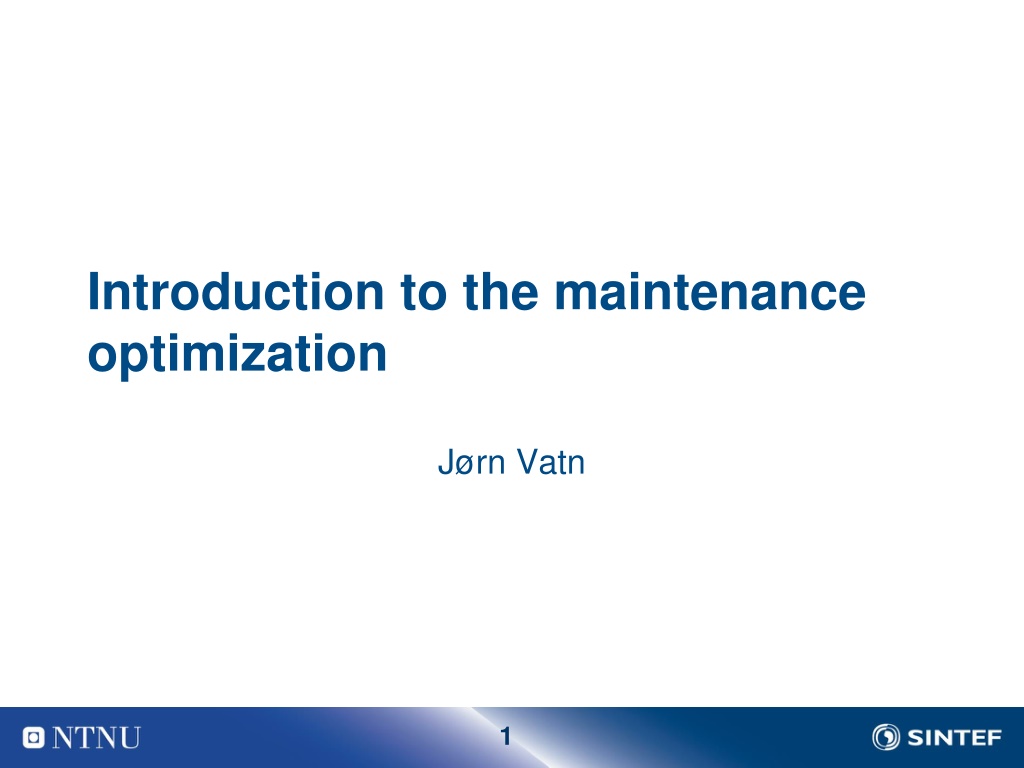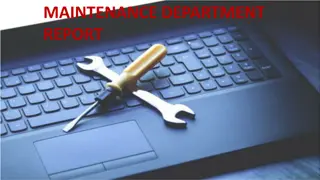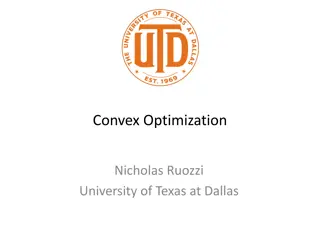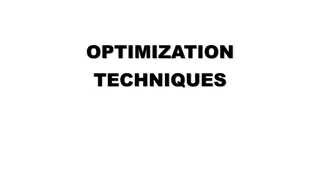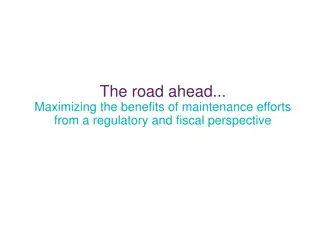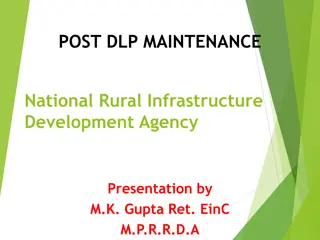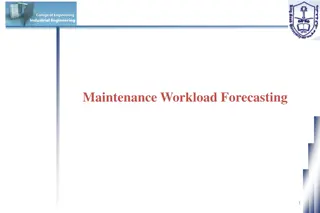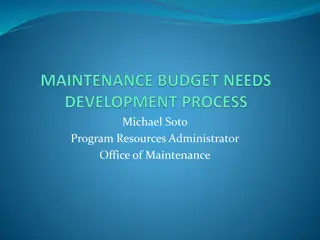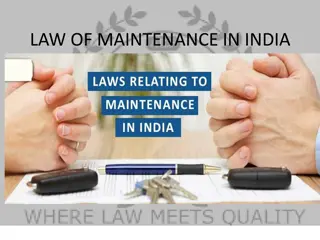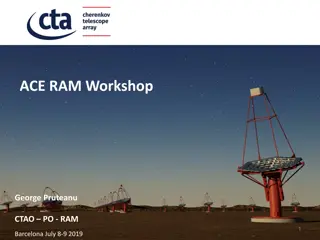Maintenance Optimization Overview and Strategies
Explore the concept of maintenance optimization, including definitions, scope, theory, and the importance of Preventive Maintenance and Reliability Centered Maintenance (RCM) in establishing an optimal maintenance program. Learn about balancing costs, decision-making for maintenance intervals, spare parts management, and more.
Download Presentation

Please find below an Image/Link to download the presentation.
The content on the website is provided AS IS for your information and personal use only. It may not be sold, licensed, or shared on other websites without obtaining consent from the author.If you encounter any issues during the download, it is possible that the publisher has removed the file from their server.
You are allowed to download the files provided on this website for personal or commercial use, subject to the condition that they are used lawfully. All files are the property of their respective owners.
The content on the website is provided AS IS for your information and personal use only. It may not be sold, licensed, or shared on other websites without obtaining consent from the author.
E N D
Presentation Transcript
Introduction to the maintenance optimization J rn Vatn 1
Definitions Maintenance The combination of all technical and administrative actions, including supervision actions, intended to retain an item in, or restore to, a state in which it can perform a required function Preventive maintenance The maintenance carried out at predetermined intervals or according to prescribed criteria and intended to reduce the probability of failure or the degradation of the functioning of an item Corrective maintenance The maintenance carried out after fault recognition and intended to put an item into a state in which it can perform a required function Maintenance optimization Balancing the cost and benefit of maintenance 2
Scope of maintenance optimization Deciding the amount of preventive maintenance (i.e. choosing maintenance intervals) Deciding whether to do first line maintenance (on the cite), or depot maintenance Choosing the right number of spare parts in stock Preparedness with respect to corrective maintenance Time of renewal Grouping of maintenance activities 3
Maintenance theory Failure rate The bath tub curve is a basis for choosing maintenance activities Time There are two such curves The hazard ratefor local time The failure intensityfor global time Combining the two: 4
Performance loss The hazard rate for local time is appropriate for components such as light bulbs in the signalling system. Methods are RCM and FMEA Performance loss Failure intensity/ 1 Local time Local time Local time 4 3 2 Global (system) time Point replacement of sleepers is a mean to postpone the complete renewal of sleepers. JBV method=LCC. JBV method=LCC. Rail grinding is a maintenance activity to extend the life length of the rails. JBV method=LCC. Complete renewal will be required at some point of time. 5
Preventive maintenance and RCM In this course we have main focus on preventive maintenance (PM) Maintenance optimization is thus more or less the same as establishing an optimal maintenance program Reliability Centred Maintenance (RCM) is often considered to be the best approach in this context RCM is a systematic consideration of system functions, the way functions can fail, and a priority based consideration of safety and economics that identifies applicable and effective PM tasks 6
Renewal and Life Cycle Cost As the system deteriorates, traditional preventive maintenance activities could not bring the system to a satisfactory state Renewal of the entire system, or part of the system is required The cost of renewal is often very large we need formalised methods to determine when to perform renewal In this course we will present methods for optimum renewal strategies based on LCC modelling The following dimensions are included in the LCC model: safety costs punctuality costs maintenance & operational costs cost due to increased residual life length project costs 7
Effective failure rate This effective failure rate is the failure rate we would experience if we (preventive) maintain a component at a given level Notation: E = E( ) E is the effective failure rate = expected number of failure per unit time is the maintenance interval 8
Effective failure rate and optimization There are two challenges First we want to establish the relation = E( ) depending on the (component) failure model we are working with Next, we need to specify a cost model to optimise The cost model will generally involve system models as fault tree analysis, Markov analysis etc. This enables us to find the optimum maintenance intervals in a two step procedure 9
Introductory example Component model Effective failure rate is given by = E( ) = /100 is the maintenance interval Total cost of a component failure CMCost = 10 Corrective maintenance cost including loss of production during the repair period Cost per preventive maintenance action carried PMCost = 1 The total cost per unit time C( ) = PMCost / + CMCost E( ) = 1 / + /10 10
Solutions Graphical MS Excel Solver Analytical 11
